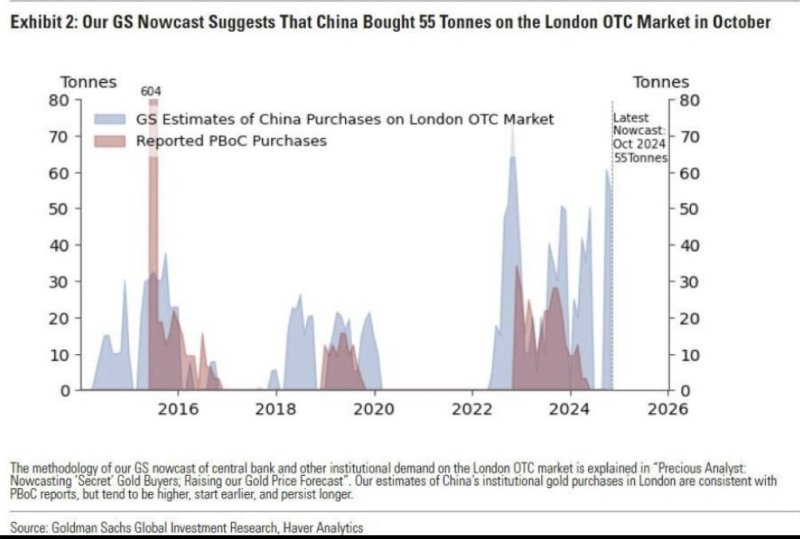In a recent Money Metals podcast, host Mike Maharrey sat down with Jan Nieuwenhuijs, a recognized expert in global gold markets, to discuss his journey into the field and the dynamics of international gold trends, particularly in China.
Here’s a summary of their conversation, which covers Nieuwenhuijs’ unique career path and his expert insights on global central bank gold accumulation, U.S. gold reserves, and BRICS’ potential challenge to the dollar.
(Interview Begins Around 6:16 Mark)
Jan Nieuwenhuijs began his career as a sound engineer in the Dutch film industry but pivoted to economics after the 2009 global financial crisis. The crisis significantly impacted his work, leading him to explore the factors behind economic instability.
His interest in gold was sparked by his understanding of gold’s scarcity and historical track record as a reliable store of value. He began investing in and researching gold, eventually establishing himself as an expert in Chinese gold markets, COMEX, and central bank gold policies.
In 2014, after publishing key insights on China’s gold market, Nieuwenhuijs caught the attention of major bullion dealers and transitioned into professional gold market analysis. His commentary on global gold dynamics, particularly the Chinese gold market, has since earned him recognition as a thought leader in the field.
China’s Secret Gold Accumulation
One key point discussed in the podcast was China’s central bank gold buying strategy. Nieuwenhuijs highlighted China’s geopolitical motive to accumulate gold as a hedge against potential sanctions from the West, similar to those imposed on Russia during the Ukraine conflict. China holds an estimated $3 trillion in foreign exchange reserves, making it vulnerable to international sanctions.
Officially, China claims to hold approximately 2,300 tons of gold, but Nieuwenhuijs believes the true figure is closer to 5,000 tons. He explains that China deliberately underreports its gold holdings to avoid spooking markets, which could drive up prices and hinder its ability to continue purchasing at favorable rates. He also revealed that a significant portion of China’s gold buying is done covertly, a practice shared by other countries like Saudi Arabia. According to Nieuwenhuijs, these secret purchases have skewed official reports by organizations such as the IMF and the World Gold Council.
Nieuwenhuijs estimated that approximately 80% of the gap between reported and actual global central bank gold purchases is due to secret Chinese acquisitions, with 10% attributed to Saudi Arabia.
U.S. Gold Holdings: Transparency Concerns
The conversation also touched on the U.S. gold reserves, which are officially stated to be just over 8,000 tons. However, Nieuwenhuijs pointed out concerns about the transparency and credibility of U.S. gold audits.
While the U.S. regularly audits its gold holdings, the auditing process has been inconsistent, and certain vaults have been opened multiple times, raising questions about the accuracy of these audits.
Despite these irregularities, Nieuwenhuijs stressed that there is no definitive proof that the U.S. gold reserves are lower than reported or that they have been pledged or leased out. However, the lack of transparency continues to fuel speculation and mistrust.
BRICS and the Dollar’s Dominance
The podcast concluded with a discussion on the upcoming BRICS Summit and whether the group poses a credible threat to the U.S. dollar’s global dominance.
While many analysts have speculated about BRICS countries potentially creating an alternative global currency system, Nieuwenhuijs remains skeptical. He argues that while there is clear dissatisfaction with the dollar among BRICS members, the development of a new international currency would take decades, much like the creation of the Euro.
Instead, Nieuwenhuijs finds initiatives like mBridge—a cross-border payment system using central bank digital currencies (CBDCs)—more intriguing. This system involves key players like China, Saudi Arabia, and the United Arab Emirates and offers a viable alternative to the dollar in trade. He noted that while the dollar remains entrenched, particularly due to its liquidity, these initiatives signal growing momentum toward a more multipolar financial world.
Conclusion
Jan Nieuwenhuijs’ insights provide a fascinating look into the mechanics of global gold markets, the geopolitical motivations behind central bank gold buying, and the future of the U.S. dollar. His unique perspective, shaped by years of independent research and a non-traditional path into economics, offers valuable lessons for investors and economists alike.
As geopolitical tensions rise and central banks quietly accumulate gold, Nieuwenhuijs’ analysis highlights the growing importance of gold in the global financial system.
For more in-depth analysis from Jan Nieuwenhuijs, you can read his work on the Money Metals website or follow him on X (formerly Twitter), where he shares regular updates on gold markets and economic trends.
Key Questions & Answers

Here are the key questions and answers from the podcast between Mike Maharrey and Jan Nieuwenhuijs:
How did Jan Nieuwenhuijs transition from the movie industry to gold market analysis?
Jan explained that after the 2009 financial crisis, work in the Dutch movie industry dried up, prompting him to explore economics. Fascinated by gold as a scarce resource, he began researching and investing in gold. His first major insight came when he uncovered critical information about the Chinese gold market, which eventually led him to a full-time career in gold market analysis.
Has China really stopped buying gold or just stopped reporting it?
He believes China is continuing to accumulate gold but has chosen not to report it. The official numbers (around 2,300 tons) are likely far lower than the true figure, which he estimates to be around 5,000 tons. China has strong incentives to increase its gold reserves, given its foreign exchange reserves are vulnerable to Western sanctions, similar to what happened to Russia.
What are your thoughts on the U.S. gold holdings and the lack of transparency around audits?
While Jan doesn’t have definitive proof that U.S. gold reserves are lower than reported, he highlighted significant issues with the auditing process, such as vaults being opened multiple times without clear explanations. He suggests that the U.S. gold auditing system lacks credibility, feeding public mistrust and fueling conspiracy theories.
Is BRICS a credible threat to U.S. dollar dominance?
Jan thinks the idea of BRICS replacing the dollar is overstated. Although BRICS has been discussing alternatives to the U.S. dollar since 2009, no concrete progress has been made. He noted that more promising initiatives include projects like mBridge, a CBDC-based payment system among Asian and Middle Eastern nations, which could diminish the dollar’s use in global trade but not immediately replace it.
These questions helped uncover Nieuwenhuijs’ detailed analysis of global gold markets and the evolving geopolitical landscape around gold and currencies.
Read the full article here












Leave a Reply